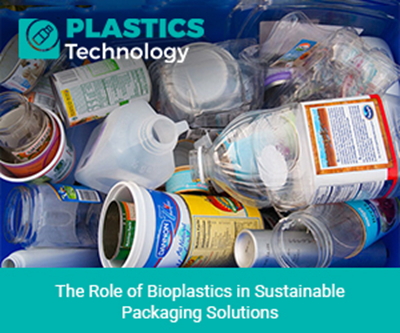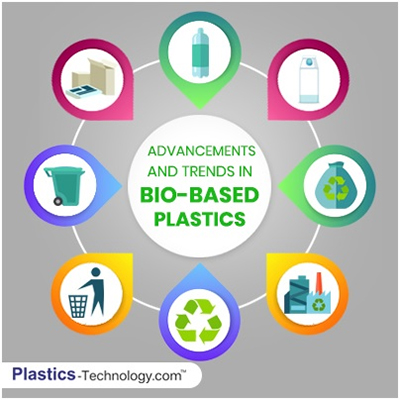Articles
The Role of Bioplastics in Sustainable Packaging Solutions

Introduction:
In the modern world, sustainability is a top priority in packaging. With global plastic pollution posing a severe threat, the demand for eco-friendly alternatives has never been more critical. Enter bioplastics – innovative materials derived from renewable sources. These hold promise in reducing packaging's environmental impact while tackling pressing issues like plastic pollution and carbon emissions. This article explores the pivotal role of bioplastics in revolutionizing sustainable packaging solutions and their potential to bring about positive change.
A) Understanding Bioplastics
Definition and Differentiation: Bioplastics are eco-friendly alternatives to traditional plastics, sourced from renewable materials, and designed to reduce environmental impact. They stand apart from conventional plastics due to their origin, composition, and sustainability goals.
Sources of Bioplastics:
1. Bio-based Bioplastics: Derived from renewable resources such as plants (e.g., corn, sugarcane), reducing dependence on finite fossil fuels. Bio-based bioplastics offer a sustainable alternative to petroleum-based plastics.
2. Biodegradable Bioplastics: A subset of bioplastics engineered to naturally decompose under specific conditions, like heat or microbial action. They find applications in items like food packaging and disposable cutlery, reducing the burden on landfills.
Properties and Versatility of Bioplastics:
Biodegradability: Biodegradable bioplastics break down into natural components, addressing concerns about plastic waste persistence and contributing to a circular economy.
Renewable Source: Bio-based bioplastics' raw materials come from replenishable sources, reducing carbon emissions and diminishing reliance on fossil resources.
Reduced Carbon Emissions: Bioplastics production generally emits fewer greenhouse gases compared to traditional plastics, aligning perfectly with sustainability goals.
Versatility: Bioplastics can be customized to exhibit a wide range of properties, making them adaptable to diverse packaging requirements, from rigid containers to flexible films.
Reduced Toxicity: Bioplastics often contain fewer harmful chemicals and additives than their conventional counterparts, enhancing safety for consumers and the environment.
Compatibility with Existing Equipment: Many bioplastics can be processed using standard manufacturing machinery, facilitating the adoption of sustainable packaging solutions.
Brand Image: Embracing bioplastics aligns with sustainability initiatives and can positively influence a brand's reputation, attracting environmentally conscious consumers and reinforcing corporate responsibility.
B) Environmental Benefits of Bioplastics
Reduced Carbon Footprint:
Bioplastics offer a substantially lower carbon footprint compared to conventional plastics. This reduction stems from multiple factors:
Renewable Feedstock: Bioplastics are often derived from renewable resources, such as plants, which absorb carbon dioxide during their growth. This offsets emissions generated during bioplastic production.
Lower Energy Requirements: The manufacturing process for bioplastics typically requires less energy than the energy-intensive processes involved in producing traditional plastics from fossil fuels.
Reduced Greenhouse Gas Emissions: Bioplastic production generates fewer greenhouse gas emissions, contributing to the mitigation of climate change.
| Also Read: Sustainable Plastic Packaging: Functionality and Evolution |
Mitigation of Fossil Resource Depletion:
Bioplastics play a vital role in lessening our reliance on finite fossil resources:
Renewable Feedstock: Bio-based bioplastics utilize plants, such as corn or sugarcane, as their source materials. These resources can be replenished annually, reducing the depletion of fossil fuel reserves.
Decreased Petroleum Dependency: As the demand for bioplastics grows, there is a proportional decrease in the consumption of petroleum, a finite resource that is essential for various industries beyond plastics manufacturing.
Reduced Plastic Pollution in Oceans and Landfills:
Bioplastics offer a potential solution to the pervasive issue of plastic pollution:
Biodegradability: Biodegradable bioplastics have the capacity to break down naturally into harmless compounds under specific conditions. This feature significantly reduces their persistence in oceans and landfills, where traditional plastics can linger for centuries.
Compostable Varieties: Some biodegradable bioplastics are suitable for industrial composting facilities, offering a sustainable end-of-life option and reducing landfill waste.
By mitigating carbon emissions, lessening fossil resource depletion, and addressing plastic pollution, bioplastics demonstrate their capacity to significantly reduce the environmental impact of packaging and plastic materials.
C) Bioplastics in Packaging
Growing Popularity in the Packaging Industry:
Bioplastics have gained increasing traction within the packaging industry due to their environmental advantages and consumer demand for sustainable options. This popularity is driven by several factors:
Environmental Awareness: The increasing recognition of plastic pollution and the impacts of climate change has driven a heightened demand for environmentally friendly packaging materials.
Government Backing: Numerous countries and regions have put in place regulations and incentives aimed at fostering the use of sustainable packaging materials. These initiatives are instrumental in encouraging the adoption of bioplastics within the industry.
Consumer Preference: Eco-conscious consumers are actively seeking products with sustainable packaging, prompting brands to embrace bioplastics to enhance their appeal.
Successful Bioplastic Packaging Solutions:
Bioplastics have found success in a wide range of packaging applications across various sectors:
Food Packaging: Bioplastic films, containers, and wraps have been used for fresh produce, snacks, and beverages. For instance, some brands have adopted PLA (polylactic acid) containers for yogurt and salad packaging.
Cosmetics: Bioplastic packaging for cosmetics, such as lipstick tubes and cream jars, provides a sustainable and aesthetically pleasing alternative. Brands like L'Oréal have incorporated bioplastics into their product packaging.
Pharmaceuticals: Bioplastic vials, bottles, and blister packs have been utilized for pharmaceutical products. These materials meet stringent quality and safety requirements while reducing environmental impact.
Real-World Case Studies:
1. Coca-Cola's PlantBottle: Coca-Cola introduced the PlantBottle, a PET plastic bottle made partially from sugarcane-based bioplastics. This innovation reduced the carbon footprint of their PET bottles by replacing some petroleum-based materials.
2. Tate & Lyle's Sustainable Starch Packaging: Tate & Lyle, a food ingredients company, developed a bioplastic called Polysorb ID 37, derived from corn starch. It has been used for sustainable packaging solutions, reducing the environmental impact of food packaging.
3. NaturALL Bottle Alliance: An alliance comprising Danone, Nestlé Waters, and Origin Materials was established with a mission to create PET bottles entirely from bio-based sources. Their goal is to substantially diminish the carbon footprint associated with plastic bottle production.
These case studies highlight how leading brands are adopting bioplastics to improve their environmental sustainability profiles while maintaining product quality and functionality. Bioplastics offer a versatile and eco-friendly choice for packaging materials, aligning with both consumer preferences and corporate sustainability goals.
D) Challenges and Considerations
Limitations of Bioplastics:
Bioplastics, while promising, face several limitations that must be acknowledged:
Cost: Bioplastics are often more expensive to produce than traditional plastics due to factors like raw material costs, production processes, and economies of scale. This cost differential can be a barrier to widespread adoption, especially for smaller businesses.
Production Scale: Meeting the global demand for bioplastics remains challenging as their production capacity currently lags behind that of traditional plastics. Bridging this gap is a time-consuming process.
Proper Disposal Methods and Infrastructure for Biodegradable Bioplastics:
Biodegradable bioplastics, while valuable in reducing plastic pollution, require specific disposal conditions to realize their environmental benefits:
Composting Facilities: Biodegradable bioplastics, such as PLA, often require industrial composting facilities with controlled temperature and humidity to break down efficiently. These facilities may not be widely available, hindering proper disposal.
Consumer Education: Effective disposal requires consumer awareness and education about which items are biodegradable and how to dispose of them correctly.
Landfills: In typical landfill conditions with limited oxygen, biodegradable plastics may not break down as intended. This underscores the importance of expanding composting infrastructure.
Addressing Misconceptions and Greenwashing:
The bioplastics market has encountered misconceptions and greenwashing practices:
Misleading Claims: Some products labeled as "biodegradable" or "eco-friendly" may not meet established standards for biodegradability or sustainability. This can mislead consumers and undermine trust in bioplastics.
Variability in Biodegradability: Biodegradable bioplastics differ in their biodegradation rates and conditions. Clear labeling and standardized testing methods are essential to avoid confusion.
Sustainable Sourcing: Ensuring that bio-based bioplastics are sourced sustainably and do not contribute to deforestation or other environmental issues is a critical consideration.
Addressing these challenges and considerations requires collaboration among industries, governments, and consumers. Sustainable packaging solutions, including bioplastics, must be part of a broader strategy that encompasses responsible production, proper disposal infrastructure, and transparent labeling to realize their full environmental potential.
E) Innovations and Future Prospects
Recent Innovations in Bioplastics Research and Development:
Advanced Feedstocks: Researchers are exploring novel feedstock sources, such as algae and agricultural residues, to further diversify the raw materials for bioplastics. This reduces competition with food crops and expands sustainability.
Nanotechnology Integration: Nanocomposites, where nanoscale additives are incorporated into bioplastics, offer enhanced properties like increased strength, barrier performance, and flame resistance.
Biodegradation Enhancements: Ongoing research focuses on improving the biodegradability of bioplastics under various environmental conditions, making them more versatile and effective in reducing plastic waste.
Emerging Trends in Bioplastics:
Advanced Biodegradable Materials: Next-generation biodegradable bioplastics are being developed to meet demanding applications like durable packaging, agricultural films, and 3D printing materials, expanding their scope beyond single-use items.
Advanced Bioplastic Properties: Bioplastics are under development to equal or surpass the performance of traditional plastics. These advancements encompass improvements in high-temperature resilience, barrier capabilities, and mechanical durability.
Smart Bioplastics: Integrating bioplastics with smart technologies, such as sensors and indicators for freshness and quality in food packaging, is an emerging trend that enhances functionality.
Future of Bioplastics in Packaging and the Circular Economy:
Mainstream Adoption: Bioplastics are expected to gain wider acceptance in packaging as production costs decrease and consumer demand for sustainable options continues to rise. They will become a more integral part of the packaging industry.
Circular Economy Integration: Bioplastics play a pivotal role in a circular economy, where materials are reused, recycled, or composted. Biodegradable bioplastics can be key contributors to closing the loop by serving as compostable packaging, reducing waste, and enhancing resource efficiency.
Eco-Design: Packaging design will increasingly consider end-of-life options, with an emphasis on choosing materials, including bioplastics that align with circular economy principles.
Regulatory Support: Governments and regulatory bodies are likely to provide more incentives and regulations promoting the use of bioplastics and sustainable packaging, further driving their adoption.
Collaboration and Innovation: Collaboration among stakeholders, including researchers, manufacturers, and governments, will spur innovations that address the challenges and opportunities presented by bioplastics in packaging.
As these innovations and trends continue to shape the future of bioplastics, they are poised to contribute significantly to a more sustainable and environmentally responsible packaging industry, ultimately reducing the environmental impact of plastic waste and advancing the principles of the circular economy.
F) Sustainability and Brand Reputation
Enhancing the Environmental Image with Bioplastics:
Reduced Carbon Footprint: Bioplastics, derived from renewable sources and boasting lower carbon emissions during production, align with eco-conscious consumers' expectations. Brands using bioplastics demonstrate their commitment to reducing their environmental impact.
Mitigating Plastic Pollution: Brands that embrace biodegradable bioplastics actively participate in reducing plastic pollution in landfills and oceans. This demonstrates their commitment to tackling pressing environmental issues.
Responsibility and Innovation: Brands incorporating bioplastics signal a forward-thinking approach to packaging. This innovation demonstrates a proactive stance in response to growing sustainability concerns.
Consumer Shift towards Sustainable Packaging:
Environmental Consciousness: Consumers are increasingly aware of the environmental issues associated with traditional plastics. They actively seek products with sustainable packaging, including bioplastics, and are willing to support brands that prioritize eco-friendliness.
Influence of Millennials and Gen Z: Younger generations place a strong emphasis on sustainability, and their purchasing decisions are often guided by a brand's commitment to environmental responsibility.
Transparency and Trust: Brands that communicate their sustainability efforts transparently build trust with consumers. When bioplastics are used, brands can clearly convey their dedication to reducing plastic waste and lowering carbon emissions.
| Also Read: Bioplastics: The Future of Environmentally Friendly Packaging |
Examples of Companies Benefiting from Bioplastics:
1. Coca-Cola: The introduction of PlantBottle, partially made from sugarcane-based bioplastics, has not only reduced the carbon footprint of Coca-Cola's PET bottles but has also improved its environmental reputation.
2. IKEA: IKEA has incorporated bioplastics into its range of products, demonstrating its commitment to sustainable packaging and furniture production. Bioplastics are used in items like cushions, lampshades, and storage boxes.
3. Unilever: Unilever, a consumer goods giant, has explored bioplastics in packaging for products like shampoos and detergents. They aim to make all of their plastic packaging recyclable, compostable, or reusable by 2025.
4. NatureWorks: This company produces Ingeo™ biopolymers, including PLA, for a wide range of applications, including packaging for brands like Stonyfield Organic, Burt's Bees, and Dell. Their focus on sustainability has attracted environmentally conscious consumers.
Incorporating bioplastics into packaging not only reduces a brand's environmental footprint but also enhances its image among consumers who increasingly prioritize sustainability. By adopting bioplastics, brands position themselves as responsible, forward-thinking entities committed to a greener future, ultimately bolstering consumer trust and loyalty.
G) Conclusion
In conclusion, the article has explored the significant role of bioplastics in the realm of sustainable packaging solutions, shedding light on their transformative potential in addressing pressing environmental challenges. Here are the key takeaways:
Bioplastics as Sustainable Alternatives: Bioplastics, sourced from renewable materials and designed to reduce environmental impact, offer a compelling alternative to traditional petroleum-based plastics.
Environmental Benefits: Bioplastics contribute to a reduced carbon footprint, mitigate the depletion of fossil resources, and hold the promise of decreasing plastic pollution in oceans and landfills.
Versatility and Applications: Bioplastics exhibit a wide range of properties, making them versatile for various packaging applications across industries, from food and cosmetics to pharmaceuticals.
Consumer Demand for Sustainability: Consumer preferences are shifting towards sustainable packaging choices, and bioplastics align with this growing demand, enhancing a brand's environmental image.
Real-world Examples: Several leading companies have successfully adopted bioplastics in their packaging, showcasing the feasibility of these materials in driving positive environmental change.
In light of these insights, businesses are encouraged to consider bioplastics as not only a viable but also a responsible choice for their packaging needs. By embracing bioplastics, companies can not only reduce their environmental footprint but also strengthen their brand reputation, appealing to a discerning consumer base increasingly focused on sustainability. Bioplastics represent more than just a material; they are a catalyst for positive change in the packaging industry and a pathway toward a greener and more sustainable future.
|
Read More: Advancements in Sustainable Plastics: Reducing Environmental Impact
|



